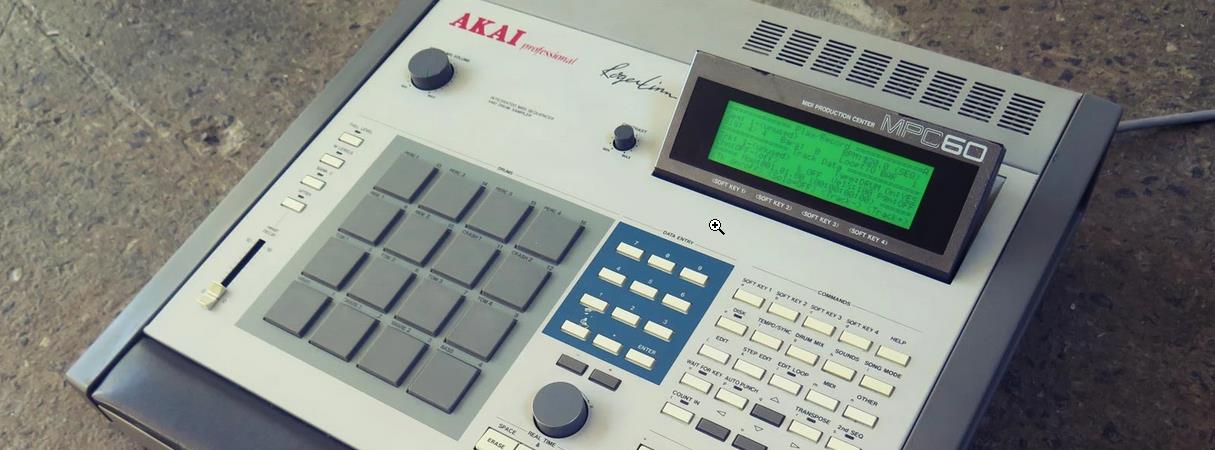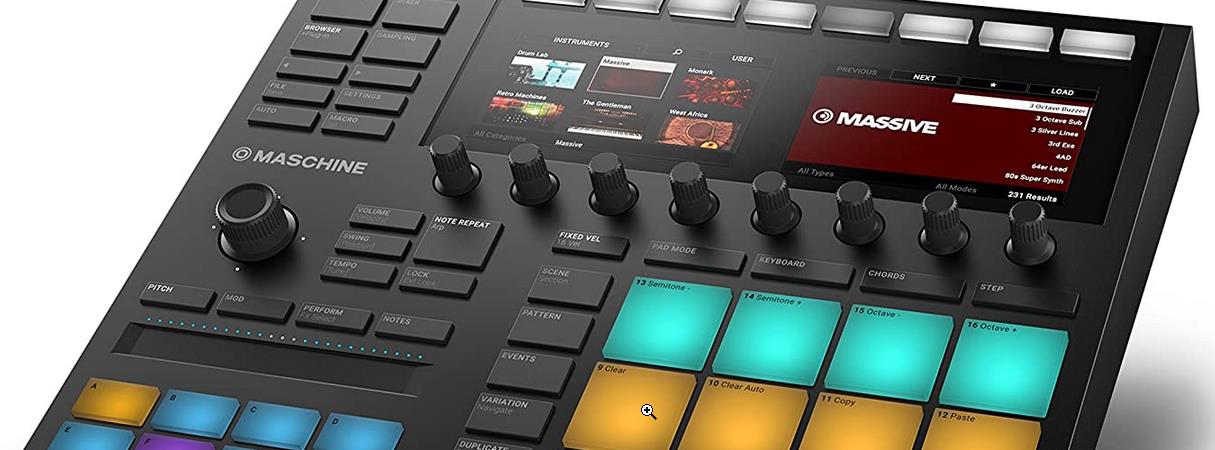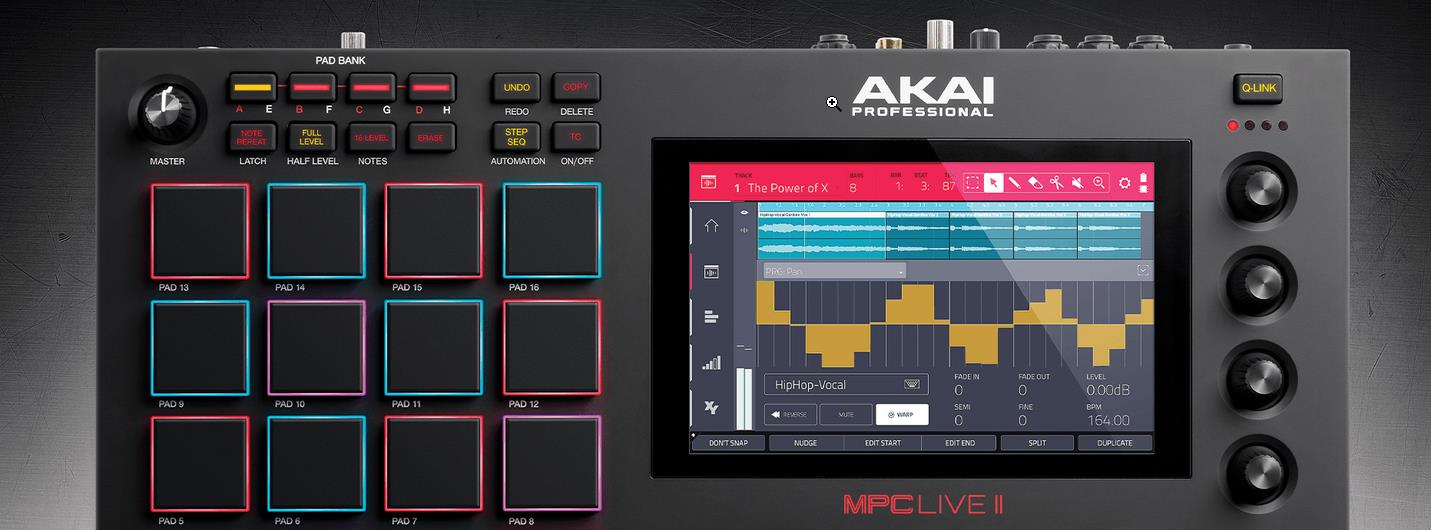Your Cart is Empty
⚠80% OFF ENTIRE ORDER AT CHECKOUT: BEATS80⚠
⚠80% OFF ENTIRE ORDER AT CHECKOUT: BEATS80⚠
⚠80% OFF ENTIRE ORDER AT CHECKOUT: BEATS80⚠
by Anders Johanson January 16, 2021 9 min read
Drum machines are a relatively new invention. They are electronic instruments that play pre-programmed drum beats. They can be programmed to play individual drum beats or a full drum track. Some famous songs have even used drum machines for all the drum parts, such as "Take On Me" by a-ha and "Autobahn" by Kraftwerk. Drum machines were first used in the late 1960s. Some early models only had a limited number of drum beats and would be preset to play a small drum solo. If you wanted a different drum part, you'd have to manually turn a knob to move onto a different preset beat. As technology improved, it became possible for drummers to program entire songs with a drum machine.
Drum machines and MPCs both serve the same purpose: they play pre-programmed drum beats and sequences for you. However, an MPC is far more customizable than a drum machine. You can assign any sound you want to each pad, or even multiple sounds at once. You can also determine how sensitive the pads are. On top of all that, an MPC will work with almost any other instrument you have, such as a keyboard or guitar. Since a drum machine is dedicated to just drums, it will have fewer options and probably not be as sensitive. Unfortunately, an MPC costs several thousand dollars. A used drum machine can be had for under $500, which is much more affordable for most musicians.
Modern music is heavily influenced by rhythm and sequenced sound layers. Nowadays, most of it is produced on a computer inside a digital audio workstation (DAW). But there were times when music software wasn't as advanced, and drum machines were in popular demand. For the most part, the role of a drummer is to create a rhythm or a beat that other musicians can use both as a metronome as well as a source of inspiration. The problem is that a live drum kit requires space that many home studios don't have, and finding a drummer for the sole purpose of getting some musical ideas going can be a hassle too.
Drum machines solve precisely these problems. A drum machine is an electronic instrument that looks like a box with some buttons and pads on it. The primary function of a drum machine is to allow its user to program drum rhythms and patterns. In the early days of these devices, the drum patterns were preprogrammed, and the sound selection was limited. Today's drum machines, however, are much more versatile. Current models have a myriad of programming and editing features making it possible to use external samples or even synthesize your own drum sounds.
It's safe to say that drum machines have evolved from a modest piece of analog hardware to a standalone class of musical instruments. Technical innovations like touch-sensitive pads or built-in effects make the user feel like he's in control of even the smallest details of the groove. A drum machine will never replace a live drum kit, but the hardware doesn't pretend to compete for the same spot and carves its own path. The makers of drum machines focus more and more on providing the users with extensive sound design capabilities and new ways of creating unique drum patterns. Many musicians and producers take it upon themselves to master the workflow of drum machines because it's the closest thing to a musical instrument of the 21st century.
In its pure form, a drum machine is a sequencer with preset drum sounds and effects. An MPC has all of these elements too plus a distinguishing feature — an integrated sampler. Early drum machines were restrictive because you could only use the built-in sounds. The MPC was a revolutionary innovation; it was still a drum machine but now the users were free to use whatever sounds they could find. This freedom inspired musicians to sample not only drums and percussion sounds but also melodies, movie quotes and countless other sound recordings. The MPC changed the status of the drum machine from an electronic box meant to replace a live drummer to a device versatile enough to produce a full instrumental track.
It's fair to say that the functionality of an MPC was always meant to be superior to a drum machine. You can already deduce it from the name. MPC is an abbreviation for Music Production Center, which sounds a lot grander than a sampling drum machine. Roger Linn, the inventor of the first MPC, already had a proven track record in designing drum machines. Prior to his involvement with Akai, the company that brought the MPC60 to the market in 1988, Linn had released a series of drum machines, most notably the commercially successful LinnDrum.

The idea of a sampling drum machine wasn't new in the late 1980s. There were already similar products called Grooveboxes, including the Linn 9000 engineered by Linn's own company. However, the existing hardware was either unreliable or too expensive and complicated to use. Linn's vision was to learn from the mistakes made with the Linn 9000 and create a successor that made the music production process intuitive and novice-friendly. When MPC60 first came out, its price was still pretty steep as the instrument retailed at $5000, but the unassuming box ended up taking the Hip-Hop genre by storm, and the MPC brand remains a household name to this day.
It used to be the case that producers would walk into a studio session unprepared and cook up a beat right there on the spot impressing everyone around them. They would use a keyboard, an MPC, or any other drum machine and make something from scratch. Nowadays, this form of unpremeditated beat-making is getting lost. Modern technology makes it possible to create beats with minimal hardware. All you need is a computer with a DAW installed on it and maybe a pair of studio monitors or headphones. Watching someone click in the notes in FL Studio or Ableton isn't as exciting as watching a skilled beatmaker jam on a drum pad. As a result, more and more producers prefer to make their beats in solitude in their home studios and only show the world the finished tracks.
So the short answer is — you don't need a drum pad or any external hardware other than a computer to make beats. Whether you use a drum pad while producing depends entirely on your personal preference. Let's not forget that one of the most important things in making music is having fun. There's a higher chance that your work will resonate with your audience if you're enjoying what you're doing. Some producers are used to working inside a DAW. They know the workflow, and being left alone helps them focus on the creative process. Other producers love creating beats on the fly in front of people and show off their beat-making skills because it fuels their creativity. If you fall into the second category, a drum pad or an MPC would be very beneficial.

The biggest advantage of owning a drum pad is that you'll have one more creative tool in your arsenal. Although a DAW like FL Studio has a sequencer and pattern based workflow similar to a drum machine, having a physical instrument in front of you will open a whole new world of possibilities. For example, you can't trigger multiple sounds on the fly with a computer mouse, but a drum pad will remove that limitation. Physically touching the pads will connect you to your music in a way a mouse never could, and you'll be surprised how many new ideas you'll be able to generate because of it.
Simply put, drum pads make the process of making beats more hands-on and intuitive. They allow for more experimentation and efficiency; you can finger drum for just a few minutes and quickly generate a dozen new ideas. In times when music technology is so advanced, it's easy to start thinking that modern DAWs are omnipotent and to forget that making music was always about being actively engaged. You won't regret getting a drum machine if you're a beatmaker who wants to be able to feel out the groove and build your loops more organically. And of course you don't have to restrict yourself to one tool. You can combine a drum pad with a DAW and have the best of both worlds.
The prices of drum machines vary a lot because there are so many subcategories. For a small budget, there's the Volca Beats that costs around $150. It's a drum machine that covers the basics and comes with a sequencer and a mix of sampled and synthesized sounds. A very similar product is the Volca Drums that costs about the same but relies solely on synthesized drums and offers plenty of sound design possibilities.
If you're looking for added flexibility, you'll have to spend significantly more. A highly recommended drum machine like the Roland TR-8S will be difficult to find under $700. It emulates the sounds of classic drum machines like the 808 or 909, has over 300 preset samples, and allows you to import your own samples via an SD card.
Finally, there's the upper echelon of drum machines that cost above $1000 per unit. We're talking about hardware like the MPC Live that is a drum machine, a sampler, and a DAW all in one box. The MPC Live goes way beyond the scope of a typical drum machine and can easily become the centerpiece of your home studio.
The MPC lineage includes some truly classic drum machines, aka samplers. We've already talked briefly about the MPC60, the iconic device that revolutionized music sampling. Later models that followed it like the MPC2000XL or the MPC3000 were also very popular, especially in the Hip-Hop community. Many legendary producers have used these drum machines, including names like Pete Rock and J Dilla. If you look around today, you'll come across the MPC Live II, which is the newest model currently available on the market. Below we'll discuss why it's one of the best drum machines money can buy.

One feature that separates the MPC Live II from popular drum pad controllers like the Maschine MK3 or the Ableton Push is its standalone functionality. You can connect the MPC Live II to a computer and use it in conjunction with the MPC software, but you don't have to. The MPC series has always been known for its drum machines that don't require any other external hardware. You don't even have to connect your MPC Live to a wall socket because its internal battery can power it for up to six hours.
If you'd like to take your sampler with you on vacation or work in a DAW-less environment, then the MPC Live II is the perfect choice. Imagine bringing your device to a record store and starting sampling vinyl records right there and then — the MPC Live II makes it possible. The built-in speaker furthermore enhances the portability of the drum machine. It's a new addition because the first model didn't have it. The speaker isn't the best for making serious mixing decisions, but it's certainly good enough for beat-making. Besides, you can always connect and use your headphones instead.
Like its predecessors, the MPC Live II has 16 drum pads arranged in a four by four grid. The rubber pads are velocity-sensitive (with a wide range), so the loudness of your samples will vary depending on how hard you press on the pads. Besides the drum pads, this particular model has 27 other buttons and five knobs, 2GB of RAM, and 16GB of internal storage. For anyone who loves hoarding samples, that amount of space won't be anywhere near enough. Luckily there's a removable plate on the bottom of the MPC where you can insert your own SSD and expand the storage greatly.
The highlight of the MPC Live II is its 7-inch multi-touch screen. The touchscreen makes a big difference in usability because you can access everything through it very quickly. With a controller like the Maschine MK3, you have to press a series of buttons and turn a couple of knobs to navigate to the function you need. It's not difficult to do for an experienced user, but beginners surely will be overwhelmed. On the other hand, the navigation inside the MPC Live II will feel familiar to anyone who used a smartphone or a tablet before. The step sequencer, effects, sample editing, mixing, sound library, and many other features are literally at your fingertips.
Overall the MPC Live II is a great drum machine for beginners. It doesn't take long to get used to the workflow of the device, and newcomers will be able to produce beats in no time. The MPC Live II makes it very easy to quickly capture an idea and arrange a song from start to finish because of its pattern system. The process of editing midi notes and audio samples is flawless thanks to the touchscreen. Also, the drum machine comes with a great selection of very usable stock sounds, which is handy if you're starting out and don't have a big sample library yet. And for the more advanced users, there's the possibility to sync the MPC Live device with Splice through WIFI and get all the samples you have onto your machine.